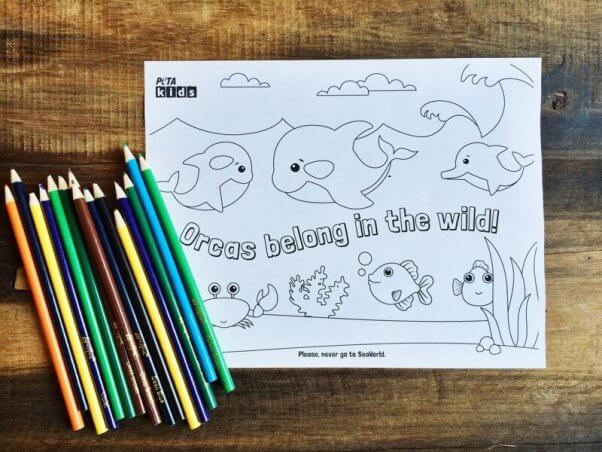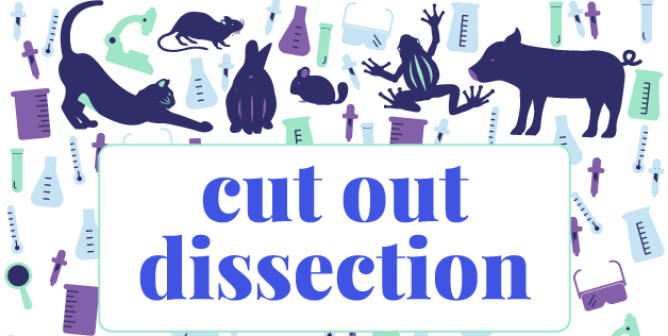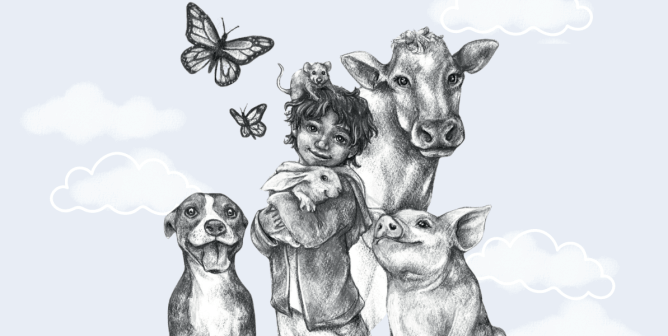100th Day of School Activities That Can Help Animals Everywhere
Happy 100th day of school! For most schools, this milestone falls right around February, and it’s a great opportunity to focus a class activity on the number 100—as well as teach students how to be kind to animals.
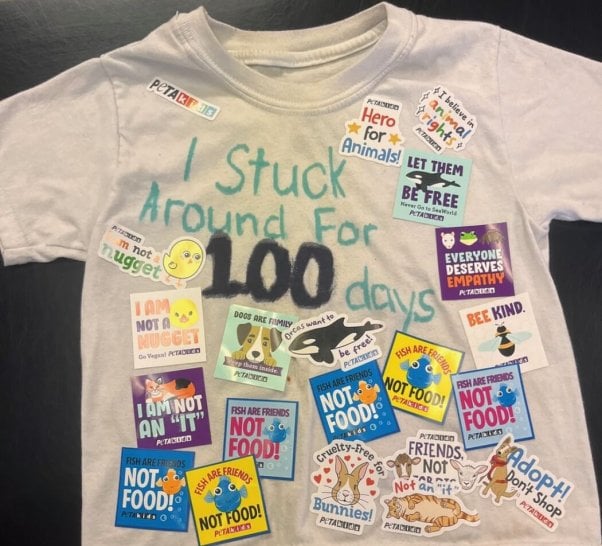
Here are a few humane education-inspired ways to celebrate the 100th day of school in your classroom:
100 Animals and Why They’re Amazing
Foster an appreciation for diversity and uniqueness by creating a list of 100 different animals and why students think they’re amazing. Explore and discuss what’s captivating about animals, using students’ input to advance project-based learning.

Create a 100-Piece Vegan Snack Mix
Practice key math skills while creating a tasty treat by providing students with small bags and 10 different vegan ingredients, like dried fruit, pretzels, cereal, or popcorn. Instruct them to count out 10 pieces of each ingredient into their bags, allowing them to craft a well-blended, 100-piece vegan snack to enjoy. This hands-on activity not only reinforces the concept of 100 but also promotes cruelty-free and nutritious eating.

Making Change for Chained Dogs
Order TeachKind’s “Change for Chained Dogs” fundraising pack, and set a goal for each class to collect at least 100 coins per week for a month in honor of the 100th day of school. Read a book like Buddy Unchained by Daisy Bix to help students understand what a chained dog’s life is really like and to help them appreciate that they’re making a difference for dogs through the fundraiser.

100 Ideas to Help Animals
Brainstorm and compile a list of 100 creative ideas on how to help and support animals. This activity can inspire students to think critically about animal rights and develop a sense of responsibility toward our fellow sentient beings.

100 Miles in the Sea
Orcas can swim up to 100 miles a day in nature, but at SeaWorld they’re confined to tanks that, to them, are the size of a bathtub. In this abusement park’s largest tank, they’d need to swim 1,208 laps around the perimeter or 3,105 lengths back and forth across the longest part in order to equal the distance they’d swim in the ocean. Share these facts with students, and have them calculate the perimeter and diameter of the largest tank at SeaWorld based on the numbers above. Then have them write opinion pieces explaining how they’d feel if they were an orca at SeaWorld. You can also hand out these printable orca coloring sheets.
List of 100 Vegan Foods
Highlight healthy eating and the benefits of compassionate living by compiling a list of 100 delicious vegan foods. This is a fun and easy way to introduce students to plant-based eating, helping them see how many vegan foods they already eat every day.

100 Kittens in How Long?! Overpopulation Activities
The 100th day of school is exciting, but the thought of 100 homeless animals isn’t. Inform students that just one unsterilized cat or dog can easily result in hundreds more who are doomed to suffer on the streets or in already crowded animal shelters. You can use TeachKind’s free lesson plans on the companion animal overpopulation crisis and then challenge students to figure out, based on the image below, how many months it would take for one unsterilized cat to produce 100 kittens.
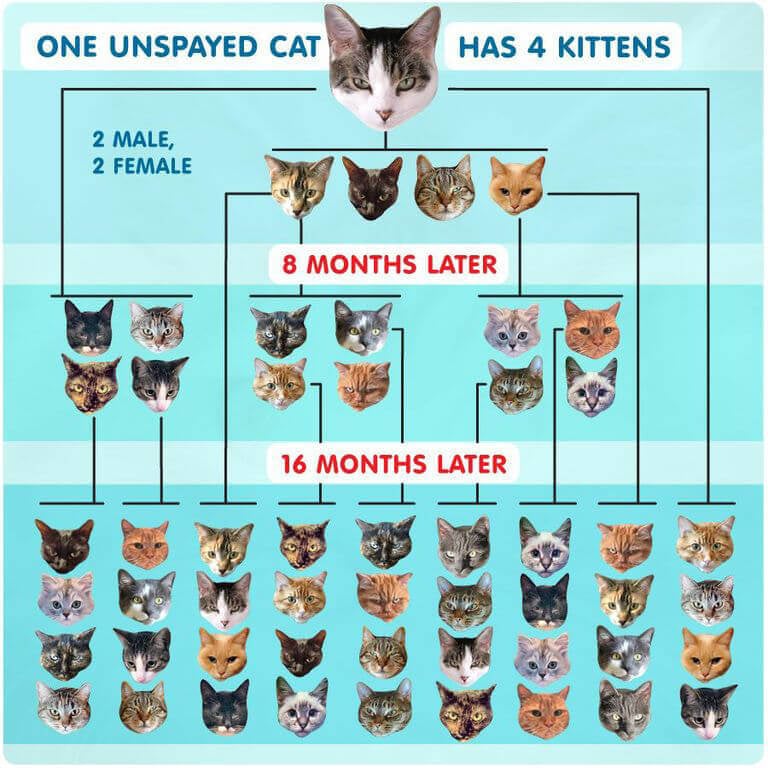
100 Acts of Kindness Challenge
Set a class goal of completing 100 individual acts of kindness before the end of the school year. Encourage students to record each act on a designated sheet to track their progress and celebrate their achievements. Let us know when they’ve reached their goal and we’ll send your class compassionate reward stickers!

A Century of Change
Have your class highlight some of the major ways humans’ treatment of other animals has changed over the last 100 years. For example, horse-drawn carriages used to be common, people used to force pigeons to deliver letters, and certain animal-welfare laws didn’t exist until recently. Ask students to consider how the advancement of the animal rights movement affects them personally, then have them highlight some of the animal rights victories that have been achieved during their own lifetimes. Check out PETA’s timeline of milestones for over four decades of inspiration.

Centipede Sculpture and Storytime
Using the medium of your choosing (we like air-dry clay and fuzzy sticks), help students create a centipede sculpture together, carefully counting out 100 legs. Afterward, you can read Junebug: No Life Too Small by Nicole Daniels and complete our story sequencing and retelling activities, emphasizing the importance of being kind to insects.
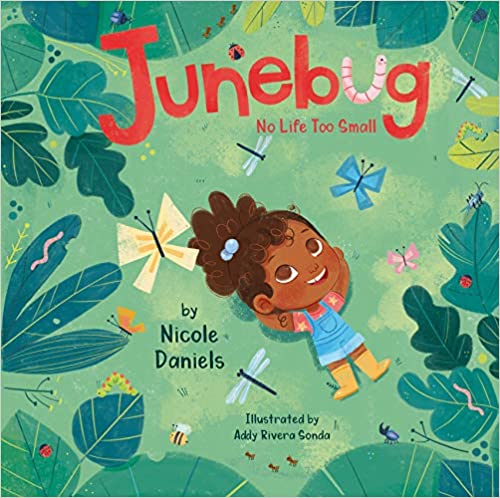
Planting Seeds for a Better Future
Plant 100 seeds with your students, emphasizing how we can protect pollinators by planting seeds. This activity is an engaging springboard for discussions on climate and the environment and could even inspire students to create a butterfly garden at school.
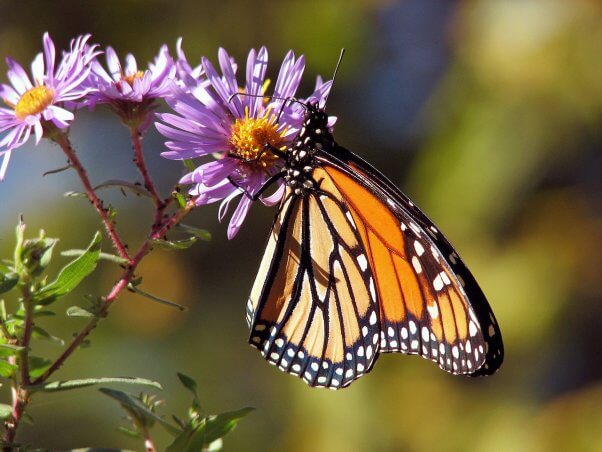
Drive to Reach 100
Read a book about dogs adopted from an animal shelter, such as Love Me Gently by Lisa Wiehebrink,then start a drive at school to collect much-needed items for a local open-admission shelter. Encourage your classes to gather 100 items total—including supplies like blankets, towels, toys, bags or cans of dog or cat food, and leashes. You could invite an animal shelter worker to visit your school to collect the donation in person. This activity not only directly supports animals in need but also teaches students the importance of community service and empowers them to see how everyone can make an impact.

Like these ideas? Please share them to help inspire other teachers to incorporate kindness into their 100th Day of School celebration!
As an Amazon Associate, PETA earns from qualifying purchases. If you buy something after clicking the Amazon links on this page, a percentage of the qualifying purchase will be donated to PETA and help us protect more animals from exploitation.

